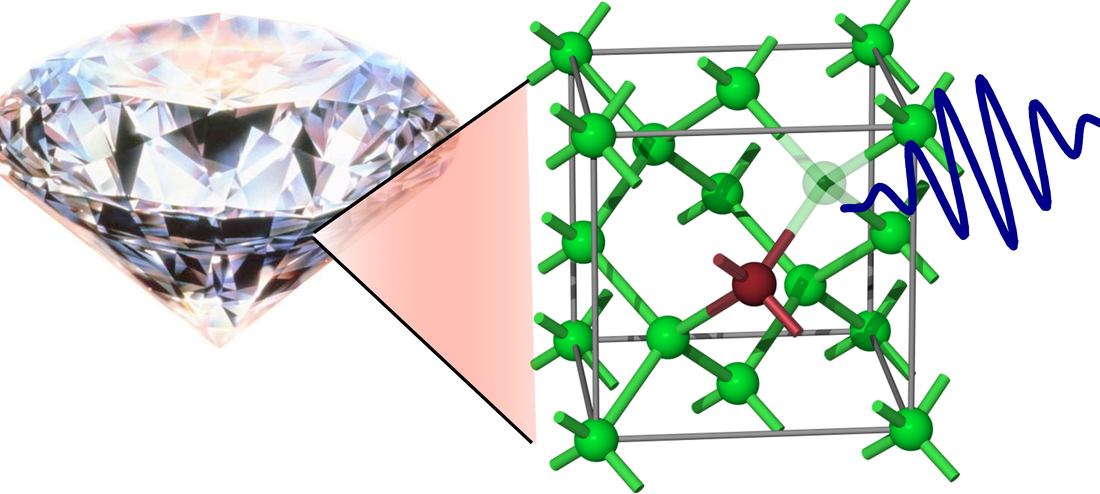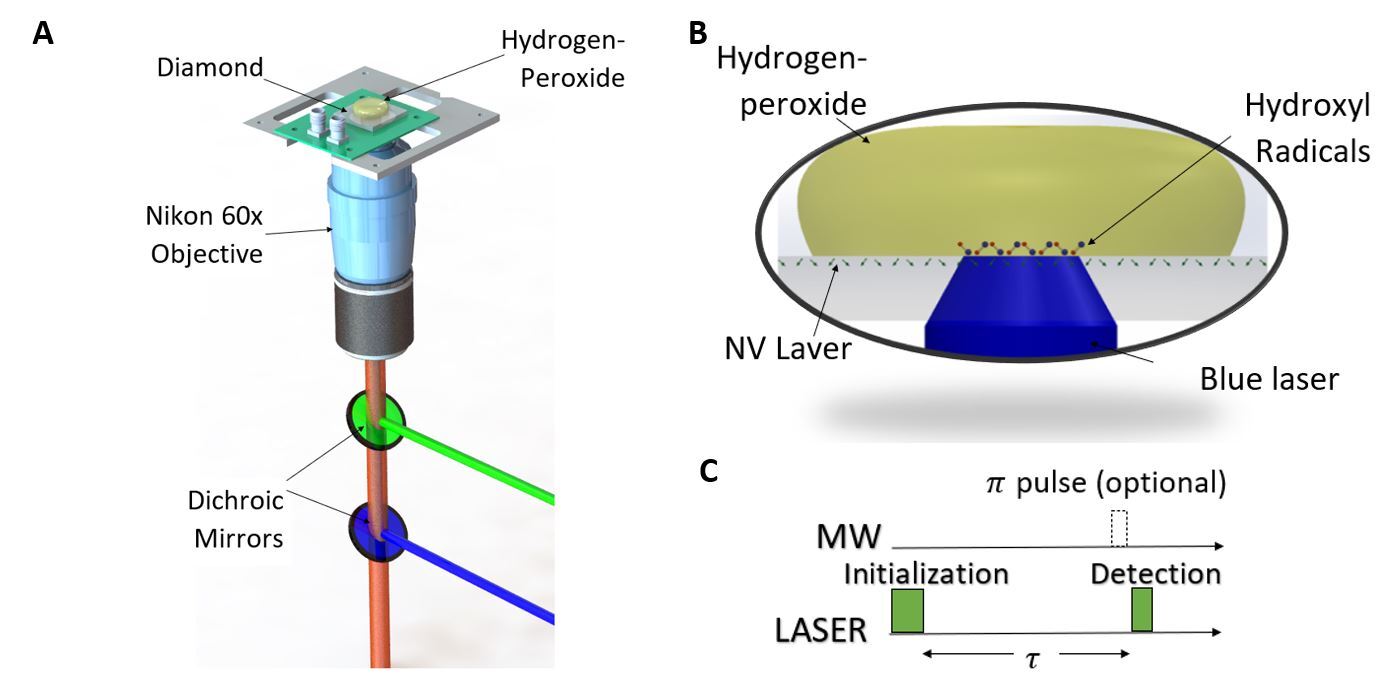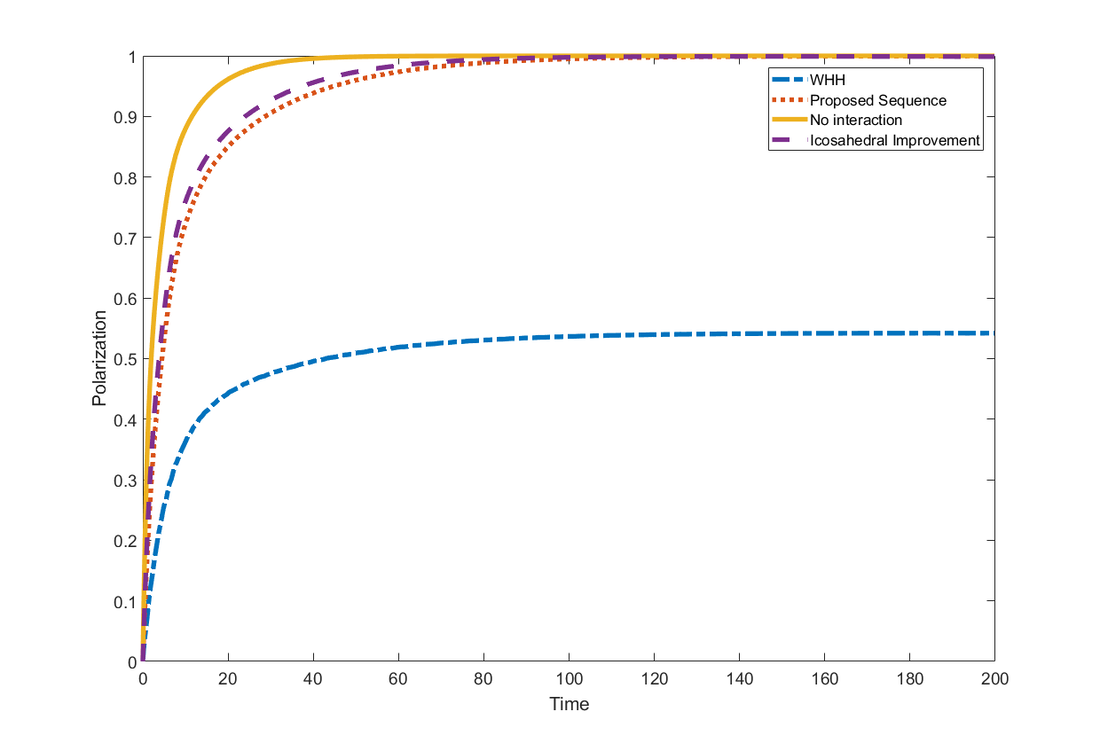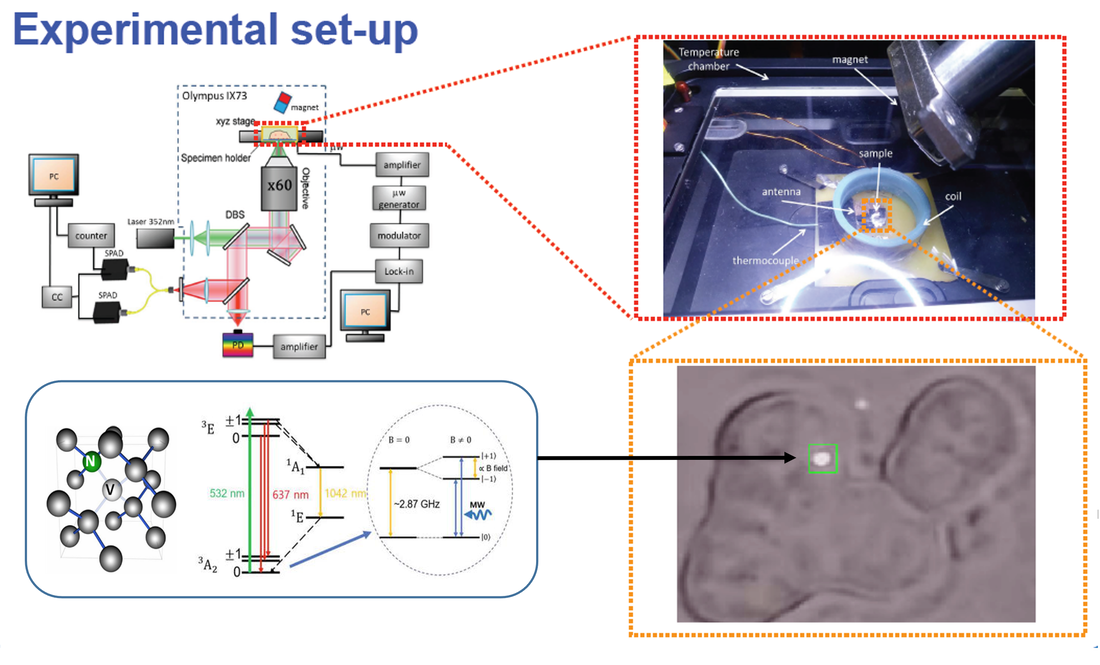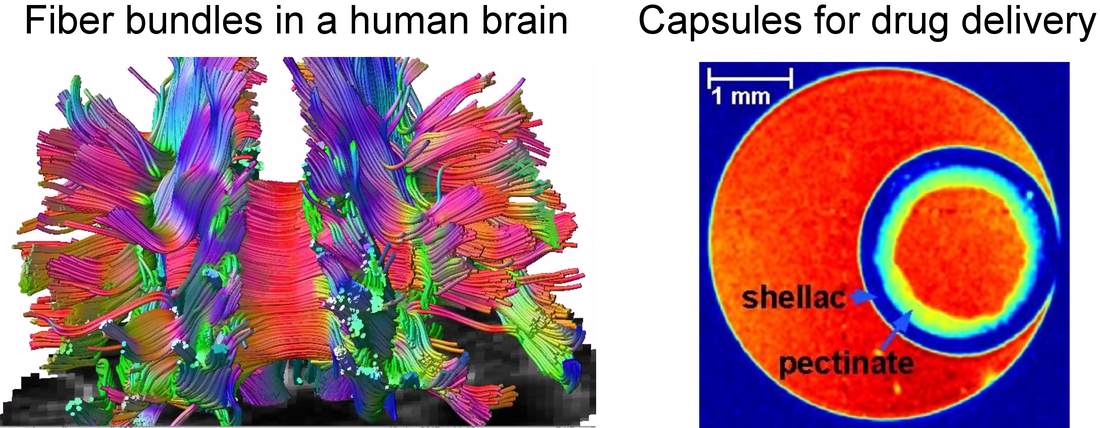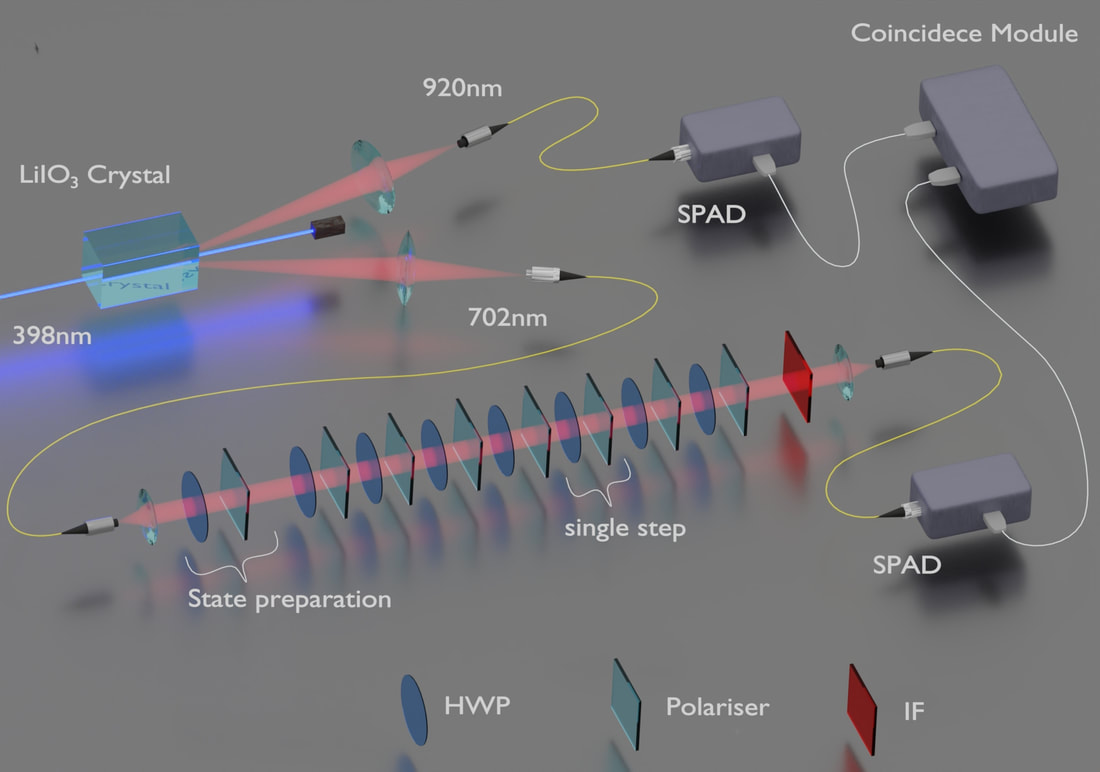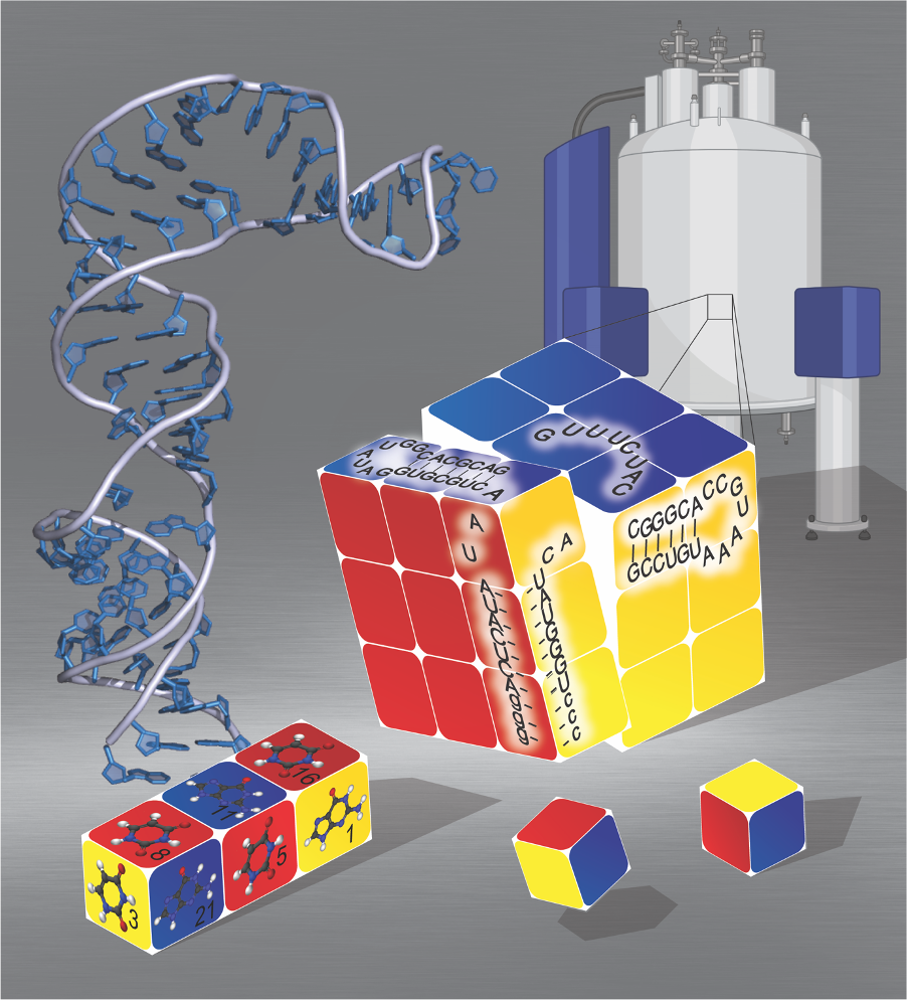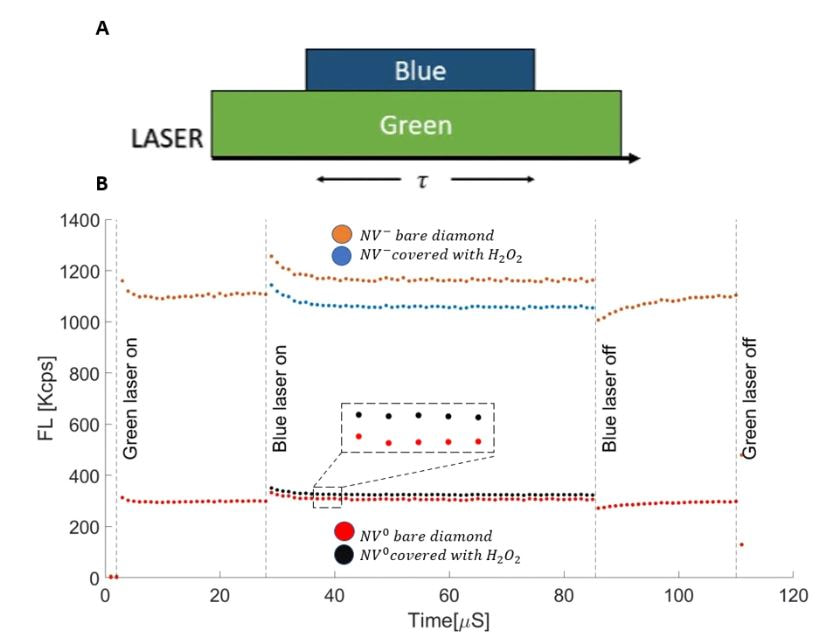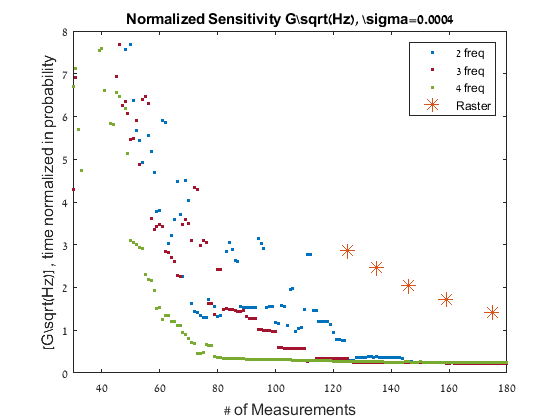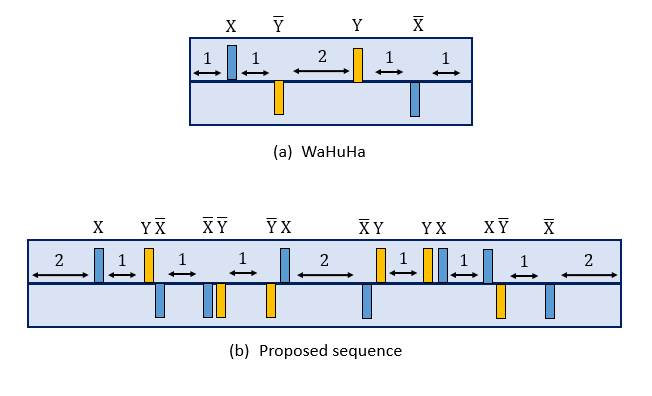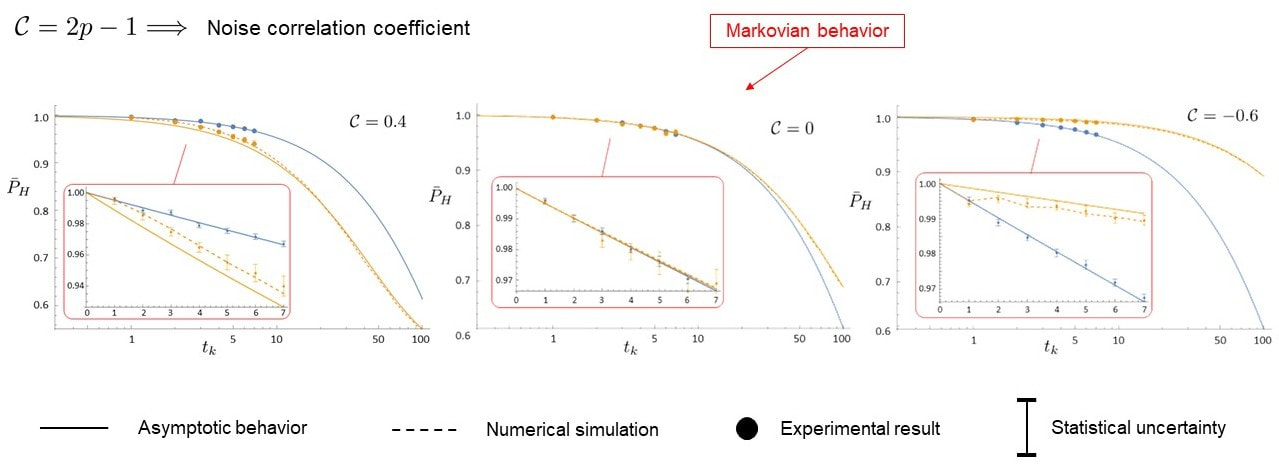PATHOS Project (2019-2024).It is the purpose of PATHOS to pursue our potentially ground-breaking multidisciplinary effort in biomedical diagnostics. Starting from novel fundamental approaches to dynamical control, we seek to create new paradigms concerning control or guidance of spin evolutions in complex spin networks, so as to gear them to hitherto unforeseen MR applications in chemistry, biology and medicine. In a nutshell, PATHOS aims to further the very fruitful synergy pioneered by our partners towards developing new task-oriented comprehensive sensing strategies and exploring the new frontiers they entail for NMR, optical and MRI based analysis.
|
More specifically, the PATHOS shared objectives are:
- Develop advanced control schemes:
- polarization transfer/cooling
- control of interacting spin systems
- Characterize and mitigate effects of (possibly unwanted) non-classical noise
- Study and characterize non-classical effects in spin networks:
- Classify network topology in the context of:
- polarization/cooling
- quantum state transfer
- Develop high-resolution, high-sensitivity, high-bandwidth sensing
The exploited complementary approaches are:
- Combine closely theory with experiment:
- NMR, NV, Optics
- machine learning classification approaches
- compressed sensing
- Sensing:
- radical sensing/imaging
- super-resolution microscopy
- feedback schemes
PATHOS FOR THE GENERAL AUDIENCE
During the last decades, the second quantum revolution has emerged: with the foundations firmly established, scientists are discovering a range of opportunities where quantum mechanics offers improvements on existing technologies and generating fundamentally new ones, such as quantum communication and quantum computing. In the context of magnetic resonance imaging, quantum mechanics has always been essential for understanding the phenomenon. Now, we are learning how quantum mechanics can be harnessed to improve the sensitivity, resolution and information content of the imaging process. In extreme cases, such as the one shown in the image above, it is possible to obtain images with atomic resolution, using atomic systems such as the nitrogen-vacancy center in diamond to emit single quanta of light (photons) and provide detailed information at the atomic scale on material properties or important biological samples.
The first field of application of this technique concerns NV based thermometry. We have demonstrated magnetic sensing and temperature measurements, starting to work with living cells. The current sensitivity for temperature measurements is in line with the state of the art, normalized to the sensing volume, [PHYSICAL REVIEW APPLIED 13, 054057 (2020)]. We expect to demonstrate enhanced sensitivity in such scenarios using the techniques developed here.
Furthermore, besides the well known NV centers, affected by broadband spectral emission at room temperature, a quest for more bright and more monochromatic centers is ongoing. In the course of the project, new promising colour centres in diamond besides NV, such as Pb and F, are being investigated [New J. Phys. 23 (2021) 063032, Sci. Rep. 10 21537 (2020)].
- Quantum sensing
We developed an optical microscope based on diamond defects, which allows the direct, non-invasive measurement of radical concentrations, with high-sensitivity and resolution.
On a more general note, we developed and demonstrated advanced techniques to enhance our sensitivity based on “compressed sensing”. In this approach only part of the data is sampled in an informed way, such that along with specialized algorithms we can extract the signal with high fidelity in a short amount of time.
- Polarizing (cooling) samples for MRI
Such alignment of the spins, called polarization (or cooling) is difficult to achieve in state-of-the-art techniques. We are working on novel techniques in which we can use a dense ensembles of diamond defects to polarize a contrast agent, e.g. for MRI. We proposed a scheme that improves over existing processes, and holds the promise of achieving enhanced polarization.
- Magnetic Resonance Imaging
Sensing via Zeno effects
Subsequently, a second experiment involving Zeno-dynamics for stochastic noise sensing in optical systems has begun. Suppose to have a system with D possible noise sources, stochastically distributed with different probabilities within our channel; the main purpose of this experiment is to reconstruct such noise probability distribution by performing a set of N Zeno-based samplings along the channel.
Zeno to the rescue: Tackling the Covid Pandemic with advanced quantum physics
For additional information on this project, see L. Frydman’s video in Bruker video interview: https://www.bruker.com/it/products-and-solutions/mr/make-mr-more-relevant/covid19-nmr-consortium.html, or written article in https://www.bruker.com/en/landingpages/bbio/resolution-in-a-new-dimension-for-solving-challenges-of-society/israeli-scientists-collaborate-to-speed-up-covid-19-rna-research-using-ultra-sensitive-nmr-techniques.html.
More details for Experts
- Quantum sensing
We developed an optical microscope based on shallow NVs in a diamond substrate, in which the radical sample placed near the diamond modifies the NV charge state, leading to changes in the measured fluorescence spectrum. We have demonstrated this effect using hydroxyl radicals, exhibiting direct, non-invasive measurement of radical concentrations, with a sensitivity of and a spatial resolution of [Y. Ninio et. al., ACS Photonics, 8,1917-1921 (2021)].
We have further addressed the limited bandwidth of NV-based magnetic sensing in the large-field regime, by utilizing compressed sensing techniques to improve the accuracy of sub-sampling. We demonstrated significant improvements of the resulting measurement error, specifically for short-time measurements [G. Haim et. al., in preparation].
- Spin bath cooling (hyperpolarization)
We analyzed these dynamics theoretically and developed a general framework for the control of interacting spin systems in the average Hamiltonian picture [K. Ben’Attar et. al., PRR 2, 013061 (2020)]. We then utilized this framework to develop and optimize a polarization transfer scheme which combines resonant transfer approaches (such as Hartmann-Hahn) with decoupling protocols. We showed that our approach can improve over existing methods in terms of achievable polarization level and speed of polarization transfer [K. Ben’Attar et. al., in preparation].
Sensing via Zeno effects
To do so, we exploit an optical setup in which a laser, collimated in a Gaussian mode and prepared in the polarisation state |+⟩=1/√2 (|H⟩+|V⟩), is sent to a series of N=6 steps, each composed of a pair of birefringent crystals and a polariser projecting the photons onto the |+⟩ state. In each step, a birefringent crystal pair (playing the role of our stochastic noise) can be chosen among a set of D=5 possible thickness entries (0, g, 2g, 3g, and 4g, being g the minimum thickness available). At the end of the optical path, photons are detected by an EM-CCD: from the final photon count distribution registered by the EM-CCD, we are able to extract the exact number and type of birefringent crystals encountered by the photons, i.e. the probability distribution of the D noise sources along our optical channel.
AZE for Biomolecular NMR Improvements
PATHOS Deliverables up to M44
|
Deliverable Number |
Deliverable
Title |
WP |
Lead
beneficiary |
Type |
Dissemination
Level |
Due
Date (in
months) |
|
D4.1 |
WEB |
4 |
UNIFI |
Web,
etc. |
Public |
2 |
|
D4.2 |
Data Management Plan |
4 |
Weizmann |
ORDP |
Public |
6 |
|
D4.9 |
Dissemination &
Exploitation Plan 1 |
4 |
Weizmann |
Report |
Confidential |
6 |
|
D2.5 |
Non-Markovian probes |
2 |
UNIFI |
Report |
Public |
11 |
|
D1.5 |
AZE heteronuclear |
1 |
Weizmann |
Report |
Confidential |
12 |
|
D1.6 |
AZD homonuclear |
1 |
Weizmann |
Report |
Public |
12 |
|
D3.5 |
NV imager |
3 |
HUJI |
Report |
Public |
12 |
|
D3.6 |
Optical CS imaging |
3 |
HUJI |
Report |
Public |
12 |
|
D2.6 |
DD Spectral density |
2 |
TUDO |
Report |
Public |
18 |
|
D1.1 |
AZE cooling |
1 |
Weizmann |
Report |
Public |
24 |
|
D2.1 |
DD probing |
2 |
UNIFI |
Report |
Public |
24 |
|
D3.1 |
NV-imaging + CS |
3 |
HUJI |
Report |
Public |
24 |
|
D3.7 |
ODMR neurons |
3 |
INRIM |
Report |
Public |
24 |
|
D1.2 |
ADRT cooling |
1 |
HUJI |
Report |
Public |
36 |
|
D2.2 |
Optical ZD |
2 |
INRIM |
Report |
Public |
36 |
|
D2.3 |
Correlated spectra |
2 |
HUJI |
Report |
Public |
40 |
|
D3.2 |
Magnetic sensing |
3 |
TUDO |
Report |
Public |
36 |
D4.1 WEB
D4.2 Data Management Plan
D2.5 Non-Markovian Probes
D1.6 AZD homonuclear
D3.5 NV imager
D3.6 Optical CS imaging
D2.6 Spectral density
D1.1 AZE cooling: Refs. 23-25, 33-34 in Dissemination
D2.1 DD probing
D3.1 NV-imaging+CS
D3.7 ODMR neurons
D.1.2 ADRT cooling
D2.2 Optical ZD
D2.3 Correlated spectra
D3.2 Magnetic sensing
From RP4 (M45-M60):
D1.3 MRI sensitivity
D1.4 Intracell thermo.
D2.4 Noise filters
D3.3 MRI control
D3.4 ODMR cell
D4.3 Press
D4.4 Workshop
Work performed from the beginning of the project
During the first reporting period of PATHOS, we have advanced as planned towards the expected long-term objectives. From the theory side, we have introduced conceptually novel approaches to the enhancement of heteronuclear spin-polarization transfer by means of repeated measurements, phase flips or spin-orientation flips for one of the spin species (alias the probe). Secondly, we have proposed new optics experiments for Zeno-based noise spectroscopy and studied several aspects of non-Markovian probes where the noise is correlated in time.
From the experimental side, we have constructed a widefield NV-based magnetic microscope, to form the basis for the experimental demonstrations in this project. We have initiated studies of enhanced magnetic sensing capabilities through compressed sensing techniques. We have developed novel schemes for controlling dense, interacting spin ensembles, through robust pulses relying on rapid adiabatic passage, as well as generalized sequences based on the icosahedral symmetry group. Besides, we have studied spin bath coupling through advanced noise spectroscopy schemes, achieving both efficient bath characterization using uneven echo sequences, as well as detailed spectroscopy with modulated, continuous control (the gDYSCO scheme).
During its second reporting period, at Weizmann we have found that the Anti-Zeno Effect (AZE) can lead to ≥500-fold reductions in the effective acquisition times in NMR experiments that are crucial for assigning protons in RNAs like those forming the genome of the SARS-CoV-2 viruses. In parallel, at HUJI we have developed and demonstrated enhanced magnetic and noise sensing using our diamond-based magnetic microscope, along with a novel optical scheme for radical concentration characterization. At INRIM we have completed the realization of an optical set up for quantum Zeno measurements (started during RP1). In addition, we have exploited our ODMR setup for magnetic sensing, showing 40 nT/Hz^1/2 magnetic sensitivity in continuous excitation and 70 nT/Hz^½ in biocompatible conditions. Furthermore, while at TUDO new dynamical decoupling (DD) pulse sequences have been proposed and experimentally tested in MRI systems, at UNIFI we have also started to develop other optimization methods based on Machine Learning (ML) methods, to predict the unknown noise spectrum avoiding the very large sets of DD measurements.
During its third reporting period, we have performed (at Weizmann) further experimental progress on the use of AZE to optimize heteronuclear polarization transfer in the presence of fast solvent chemical exchanges, demonstrating sensitivity-enhancing performance on RNA fragments derived from the SARS-CoV-2 genome. Novel 2D NMR techniques has been experimentally implemented it on murine brains in vivo at 15.2 T and ex vivo at 14.1 T. At HUJI we have further contributed to the use of NVs for enhanced sensing, aimed at using shallow NVs for thermal sensing and relaxometry in biological contexts. We have also studied advanced control techniques based on compressed sensing (CS) for improved sensitivity in ODMR. At INRIM, we have developed a dedicated setup for the simultaneous detection of neural cell activity and temperature NV sensing. Furthermore, we have published in Phys. Rev. Lett. a joint, involving INRIM, UNIFI and Weizmann, on Zeno-based photonic noise sensing. Another theoretical and experimental collaboration involving the same three PATHOS partners has led to another noise-sensing technique being able to unravel microscopic noise events affecting a continuous variable of a quantum system. At INRIM we have also demonstrated for the first time the detection of neural temperature variations (1 °C) associated with potentiation and inhibition of neuronal firing, by exploiting a nanoscale NV thermometer based on nanodiamond ODMR. Finally, at UNIFI, we have designed a new protocol of quantum pattern recognition, tested also on binary images of human blood vessel obtained from MRI (at TUDO).
During the fourth reporting period:
As part of WP1, research at Weizmann has focused on five main tasks:
- Further optimize the use of exchange-enhanced NMR experiments, by devising a new, ultrafast approach capable of delivering these 2D NMR acquisitions in a single shot. The ensuing ultrafast 2D frequency-labeled exchange (FLEX) experiment provides an information equivalent to that of water-detected chemical exchange saturation transfer (CEST) acquisitions used in clinical and preclinical MRI, but in a single shot. The experiment was illustrated for a number of metabolites; features and opportunities opened by this new experiment were discussed R. P. Martinho, G. L. Olsen and L. Frydman, “CEST-based Detection of Labile Protons by Single-shot, Ultrafast 2D NMR", J. Magn. Reson Open, 14-15, 100096 (2023).
- Realized the source of artifacts that we had detected in our highly sensitive 2D correlations based on magnetization transfer phenomena. Indeed, repeated experience with these experiments on proteins and nucleic acids showed a number of artifacts which may confound the information being sought, in particular when seeking small NOEs among closely spaced resonances. One of these pertains to what we refer to as “spill-over” effects, originating from the use of long saturation pulses leading to changes in the signals of proximate peaks. A second, related but in fact different effect, derives from what we describe as “oversaturation” of the NOE –a phenomenon whereby the use of overtly intense RF fields may overwhelm the signature sought by SMT. The origin and ways to avoid these two effects are described. A final source of potential artifact arises in applications where the labile 1Hs of interest are bound to 15N-labeled heteronuclei. SMT’s long 1H saturation times will then be usually implemented while under 15N decoupling, based in turn on cyclic schemes leading to decoupling sidebands that, although dependent on the scheme used, will usually remain invisible. When touched by saturation frequencies, however, these “invisible” sidebands may very efficiently lead to a saturation of the main resonance, and to effects that are nearly indistinguishable from real cross relaxation effects. All these phenomena were experimentally demonstrated, and solutions to overcome them were proposed. J. T. Grün, J. Kim, S. Jayanthi, A. Lupulescu, E. Kupce, A. Oxenfarth, H. Schwalbe and L. Frydman, “Identifying and Overcoming Artifacts in 1H-based Saturation Transfer NOE NMR Experiments”, J. Am. Chem. Soc., 145, 6289–6298 (2023).
- The principles of our biomolecular polarization transfer / depletion experiments, were also extended to the study of very wideline resonances in solids. The sensitivity of these hard-to-detect nuclei in organic solids was boosted via repeatedly depleting the large, underused NMR signature resting in the protons of the sample. Over the last year we demonstrated the possibility of exploiting such enhancement to detect the broad satellite transitions of spin-3/2 (33S, 35Cl) and spin-5/2 (17O) targets, at natural abundance. A window of opportunity then opens by these methods for the characterization of potential dynamic processes, which will affect more strongly the spectral lineshapes of satellite than of central transitions. Spectral changes were indeed observed in the majority of the satellite transition lineshapes upon varying temperatures and using these techniques; some of these changes could be rationalized in terms of relatively unambiguous dynamic processes, whereas others evidence further processes –and new spin physics– that remain to be fully analyzed. T. Wolf, A. Eden-Cossoy and L. Frydman, “Indirectly Detected Satellite-Transition Quadrupolar NMR via Progressive Saturation of the Proton Reservoir”, Shimon Vega Memorial Issue, Solid State NMR, 101862 (2023).
- In the area of the use Anti-Zeno effect (AZE) to optimize heteronuclear polarization transfer in the presence of fast solvent chemical exchanges, we explored replacing inefficient J-based INEPT-type transfers, with J-based cross polarization (CP) strategies. In the preceding period we had found that that these offer a more efficient alternative to perform such transfers, particularly when leveraging the Hwater↔︎HN exchange process to boost the 1H15N transfer process. This leveraging, however, demands the simultaneous spin-locking of both Hwater and HN protons by a strong 1H RF field, while fulfilling the gHB1,H=gNB1,N Hartmann-Hahn matching condition. Given the low value of gN/gH, however, these demands are often incompatible –particularly when experiments are executed by the power-limited cryogenic probes used in contemporary high field NMR. To alleviate this we devised CP alternatives that can alleviate this limitation, and evaluated their performance on urea, amino acids, and intrinsically disordered proteins. These alternatives included new CP variants based on frequency-swept and phase-modulated pulses, designed to simultaneously fulfill the aforementioned conflicting conditions. Their performances vis-à-vis current options were theoretically analyzed with Liouville-space simulations, and experimentally tested with double and triple resonance transfer experiments. J. Kim, J. T. Grün, M. Novakovic, E. Kupce, R. Rosenzweig and L. Frydman, “Cross-Polarization Schemes for Improved Heteronuclear Transfers Involving Labile Protons in Biomolecular Solution NMR”, Angew. Chem., 62, e202304900 (2023).
- Lastly, in the area of biomolecule / pharmaceutical NMR, it was realized that the repolarization effects used so far on the basis of water exchanges, could also be leveraged in the presence of paramagnetic centers and/or when targeting low-abundance species like 13C in organic molecules. In both cases, the effects introduced by either differential paramagnetic shift and relaxation, or by polarization sharing among networks of protons, can provide a similar sensitivity boost as previously discussed for solvent exchange. The origin and potential of the resulting enhancements were analyzed, and experiments that demonstrate them in protein and natural products exemplified. Limitations and future improvements of these approaches, are also briefly discussed. M. Novakovic, J. Kim, X-C Su and L. Frydman, “Relaxation-assisted magnetization transfer phenomena for sensitivity-enhanced 2D NMR”, Anal. Chem. 95, 18091–18098 (2023). Featured cover, December issue.
On the theory side, at Weizmann we have: 1) further investigated the improvement of polarization transfer in long-range interacting spin chains with diagonal and off-diagonal disorder and their relation to localization phenomena. 2) formulated a general graph theory of spin network polarization depending on symmetry properties of the network. 3) investigated coherent interfaces between spins and artificial atoms. 4) proposed coherent nonlinear spin networks for heat/polarization redistribution and heat/polarization to work conversion (related also to WP3).
As part of WP1, at HUJI we have finalized our work on novel surface termination to enhance the quantum properties of shallow NVs (initially reported before). In collaboration with Alon Hoffman’s group at the Technion and the group of Tristan Petit at Helmholtz-Zentrum Berlin we have extended our analysis to include x-ray surface characterization, as well as additional statistics on the quantum coherence of shallow NVs. This work has recently been published (Malkinson et. al., J. Mater. Chem. C, 2024). We are currently expanding on these results by studying surface termination effects on nanodiamond samples, as well as exploring additional termination schemes, such as low energy (200eV) nitrogen implantation.
We have also followed up on our polarization transfer schemes reported before, by combining our many-body decoupling sequences with the current state-of-the-art polarization transfer approach termed PulsePol. In collaboration with Martin Plenio’s group at Ulm (the developers of PulsePol) we have incorporated our decoupling technique into PulsePol and theoretically demonstrated the near-optimal performance of the combined sequence for dense, interacting ensembles (these results are being written up for publication).
As part of WP2, at UNIFI we have further developed schemes of quantum processing of biomedical images and then integrated them with machine learning techniques for classification tasks. Moreover, we have designed and applied deep-learning algorithms to enhance both the noise-spectroscopy resolution and the high-bandwidth magnetic sensitivity on the NV platform being developed by HUJI in WP3.
Besides, a collaboration between INRIM and UNIFI has moved further steps towards real ODMR tests in biological environments, exploiting ML algorithms.
In parallel, at HUJI we have focused on advancing the schemes studied before for bio-related sensing. We have optimized diamond samples in terms of shallow NV layers for various sensing modalities relevant for bio samples, including radical sensing (as reported earlier) and low-field microwave free techniques (in collaboration with the group of Dmitry Budker at JGU Mainz). Moreover, we have developed specialized structures designed for integration into bio-compatible microscopes, enabling optical measurements through NV-diamond samples, microwave delivery and sample sustainability. In collaboration with the group of Giancarlo Forte at the national clinic research center in Brno, we are working to integrate all of these elements to enable bio-magnetic sensing of living cells.
As part of WP3, at HUJI we have finalized the work reported in the previous report, on utilizing advanced compressed sensing and machine learning schemes (later developed in WP2 by UNIFI) to enhance NV-based magnetic sensing. These results are currently being written up for publication and demonstrate improved performance in the context of the tradeoff between sensitivity and bandwidth.
Moreover, we have finalized the work on noise characterization and classification, in which a novel scheme differentiating between coherent and incoherent noise sources has been demonstrated (Penshin et. al., AVS Quantum Science 2024). This work also addresses temporal correlations of the noise, achieving enhanced operation for both Markovian and non-Markovian scenarios. We are currently extending our theoretical analysis (in collaboration with UNIFI) to tackle the non-trivial spectral features of the noise, as well as address spatial variations of the noise, specifically in the context of entangled quantum systems (in our case, entangled spin pairs, consisting of the nuclear and electronic spins of nearby defects).
As part of WP4, our achievements have been disseminated in the scientific literature and via international conferences and outreach activities, leading also to several open-access publications in international high-impact peer-review journals.
PATHOS Objectives
Objective WP1: Achieving orders-of-magnitude improvement of imaging, spectroscopy and/or thermometry resolution/quality, by experimentally demonstrating the efficacy of conceptually innovative dynamically controlled cooling schemes, pioneered by our partners, based on alternating coherent and stochastic spin control pulses, towards realistic NMR/MRI medical diagnostic applications.
Objective WP2: Exploit optimal control theory to extract more information from the noise that the bio-system exerts on the probes, to be compared with the existing diagnostic schemes and tested with NV centre and NMR platforms.
Objective WP3: Develop and demonstrate novel data processing tools, and utilize information from environment correlations, combining the WP2 tools with CS schemes and testing them on NV, MRI and optical platforms.
In order to further proceed towards these objectives, we have implemented the expected tasks for each WP with an overall progress being well inline with PATHOS planned research activities.
Objectives achieved in RP2
- Novel control schemes for enhanced sensitivity and polarization transfer. The polarization transfer rate has been improved by over a factor of 2.
- Demonstration of NV magnetic sensing with compressed sensing, achieving improved bandwidth and sensitivity. Achieved bandwidth improvement (for similar sensitivity) of over a factor of 4.
- Study of multiple spin baths - characterization of radicals through noise on shallow NVs, demonstrating a sensitivity of ~10 nMol/Hz^½ with sub-micron resolution.
- AZE-related sensitivity enhancements up to ≥500-fold reductions in the effective acquisition times for NMR experiments involving RNA imino protons, like those forming the genome of the SARS-CoV-2 viruses.
- Temperature sensing (with possible application in biological samples) based on ODMR measurement (sensitivity 5 mK/Hz^½) in bulk diamond.
- ODMR sensing protocols with NV centres showing 40 nT/Hz^1/2 magnetic sensitivity in continuous excitation (70 nT/Hz^½ in biocompatible conditions).
- Discrimination between Markovian and non-Markovian noise sources via machine learning algorithms with a theoretically predicted classification mean absolute error of around 5% (that will be experimentally tested).
- Automatic assignment of MRI voxels to tissue / liquid with high fidelity.
- Efficient quantum state tomography for 2 spin qubits of NV center with the minimum number of measurements (16) and high fidelity (99%).
Objectives achieved in RP3
- A complex molecular environment (as murine brain) was explored using both in and ex vivo at high (14.1, 15.2T) fields, using both conventional 2D NMR and our new AZE technique. In conjunction, these high field experiments have revealed ca. 10 and 29 metabolites in in and ex vivo, respectively, and lead to the assignment of 137 cross-peaks in total.
- Neuronal temperature variation (1K) at single-cell level correlated to modified network firing pattern detected via nanodiamond sensor based on optically detected magnetic resonance.
- Theoretical schemes for enhanced sensitivity and polarization transfer in spin networks have been developed to fight disorder localization. Network symmetry bottlenecks have been identified and their overriding is being sought (in progress).
- Theoretical and experimental demonstration of NV-spin coherence time enhancement by 10^3 due to nuclear spin bath noise filtering via AZE measurements.
- Single-spin sensor for RF fields with unknown frequency, phase and orientation.
- Extended measurement times for hybrid electron-nuclear spin system beyond T1(electron).
- Enhanced stability and coherence of shallow NVs through novel nitrogen termination processes, enabling higher sensitivity noise sensing and coupling to external spin baths (in collaboration with Alon Hoffman).
- Enhanced coupling and polarization transfer between NV and the surrounding nuclear spin bath, through tuning the magnetic field through the level anticrossing, leading to longer coherence times (T2*, by up to almost a factor of 2).
- Demonstrate robust noise characterization, specifically correlations in spin-bath environments, through novel control and fidelity measurement schemes, suppressing effects of coherent errors (in collaboration with Raam Uzdin).
- Enhanced magnetic sensing (in the context of ODMR) through both compressed sensing and machine learning schemes (HUJI-UNIFI) - achieve nearly order-of-magnitude improvement in the sensitivity-bandwidth product.
- Advanced implementations of noise sensing (developed previously in the context of radicals) to singlet-triplet transitions in retinal excitation dynamics and to noise in magnetic excitations.
- Advanced theoretical analysis of the control and polarization transfer in interacting spin ensembles, working toward characterization of the interplay between interactions and disorder, further improved polarization transfer schemes, and rigorous description of the coherence decay in relevant scenarios.
Objectives achieved in RP4
- In the area of the use Anti-Zeno effect (AZE) to optimize heteronuclear polarization transfer in the presence of fast solvent chemical exchanges, we explored replacing inefficient J-based INEPT-type transfers, with J-based cross polarization (CP) strategies.
- In the area of biomolecule / pharmaceutical NMR, it was realized that the repolarization effects used so far on the basis of water exchanges, could also be leveraged in the presence of paramagnetic centers and/or when targeting low-abundance species like 13C in organic molecules.
- About x200 enhancement in SNR per sqrt unit time for certain 2D NMR experiments on nucleus acids. About x50 for certain 2D protein experiments. Enabling 17O and 14N MRI based on water detection.
- Characterization of nanodiamond ODMR temperature sensors to be used in Ramos’ cells after internalization with endocytosis, pushing at the limit the present technique. ODMR measurements were performed via a home-built scanning confocal microscope with capabilities of delivering microwave (MW) pulses to a diamond sample.
- In ND based thermometry in general, by exploiting our ODMR technique in the weak orthogonal regime we improved the coherence time to T_2^*=2 µs, much longer than the standard high field states (T_2^*=0.88 µs). This implies an improvement in the temperature sensitivity of a factor \sqrt{2}.
- Deep-learning algorithms allowed us to get a x3 reduction in the number of required measurements for noise spectroscopy experiments via a single NV center in diamond (at room temperature). This improvement is remarkable by itself, but it becomes more significant when we consider that the time required to complete these experiments has a growth faster than a linear function with respect to the number of measurements, following an arithmetic progression.
- In NV-based magnetic sensing, our machine-learning approach error scales better than the traditional raster scan, and performs impressively well with an error of about 1 MHz with just 10 percent of the data points.
- We have shown theoretically that combining our advanced decoupling sequences with the pulsePol sequence for polarization transfer, improves achievable target spin polarization by approx. x10.
- We have demonstrated robust noise characterization in the presence of coherent errors, with significantly improved robustness compared to standard techniques (in this case Ramsey interferometry). In this context, we demonstrated up to x2 better accuracy in the extracted T*2.


